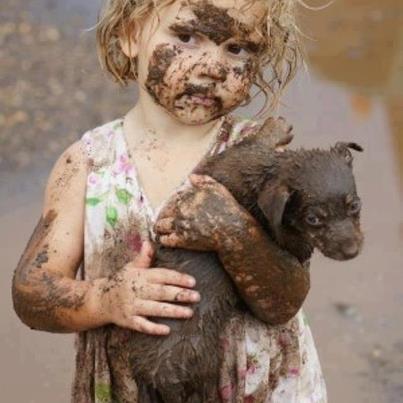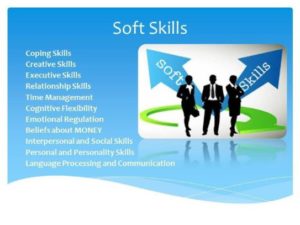
No Child is Born Bad. Children’s bad behavior has to do with MISSING SKILLS. When the skills that have been lost are identified, the bad behavior diminishes overtime and repatterning.
PROACTIVE SOLUTIONS FOR CHILDREN’S BEHAVIOR- AWAY FROM LABELING
Your child was not born to aggravate you but to please you and get your attention and love. Something is getting in the way. “If I am perfect, I will be accepted and loved”. We are perfect just because we are all humans.
TESTING
Testing has limits because there are many competing contingencies. Some children do well and some do not. It may not reflect the true reason for their behavior.
Contingencies may include:
Lack of testing skills
Inability to concentrate
Language barriers
Genetic predispositions
Passive, permissive or inconsistent parents
BEHAVIOR
Is the least important thing to look at- Behavior Modification. The behavior does not tell you what is in the child’s way. RATHER, the child has missed skills somewhere along the way. WHAT is getting in the way? WHEN is it getting in the way?
Parents must be responsive to the hand you’ve been dealt not what your expectations of ‘normal behavior’. If you force it or go against it, you make it worse. Many, many people do not have a reference point in the correct behavior because it has not been modeled by parents, caregivers, etc.
PROBLEMS
Children elicit problems so SOLVE THEM. What is the behavior? How to modify it?
problems so SOLVE THEM. What is the behavior? How to modify it?
What does time out get you?
What does sitting them in front of the computer or TV get you?
What does going to your room get you?
What does getting expelled get you?
Did you and your child have an argument? What caused it?
PROBLEM SOLVING is COLLABORATIVE- you and the child rather than unilaterally commanding, demanding and punishing. Something must be done WITH the child not TO THE CHILD. Problem solving is proactive rather than reactive. But first, there must be UNDERSTANDING before helping.
Challenging Children Lack Skills
Behavior is not motivated by being bad but rather the lack of a skill. A diagnosis is never going to help your child. Labeling a child does not tell you what skills they are lacking any more than time out, stickers, smiley faces). They are delayed in flexibility, adaptability, frustration, tolerance, problem solving. They do not have RESPOND-ABILITY or the ability to respond to situations. Therefore, identifying the skill and specific condition that is lacking enables the child to meet expectations, solve problems. CHALLENGING CHILDREN are not always challenging- only sometimes. NOTICE WHEN THEY ARE NOT CHALLENGING. The lack of a certain skill makes them a challenge. The child just cannot figure out the skill needed for the situation.
SKILLS LACKING
1) Executive Skills
2) Language Processing and Communication Skills
3) Emotion Regulation Skills
4) Cognitive Flexibility Skills
5) Social Skills
6) Coping Skills
7) Relationship Skills
8) Time Management Skills
9) Money Management
10) Personal and Personality Skills
1) Executive Skills include:
a) difficulty making transitions from one place to another
b) Hindsight or reflecting on the past experience and bring it to the present and learn from it to solve problems (how many times do I have to tell you)
c) Forethought solutions into the future to evaluate outcomes and pick the right one or lack Impulse Control and do not think before they act (telling a lie)
d) Problem solving- figure out problems to solve, define problem, discover alternative solutions and/or generalizations. The degree a solution works for the child and affects the child.
2) Language Processing and Communication includes:
a) When a child does not have language skills they may solve the problem by screaming, biting, hitting or running.
b) Inability to formulate thoughts and feelings into words
c) Inability to listen and/or try to think of a response instead of listening
d) Misses verbal cues
e) Use inappropriate language because do not have the feeling vocabulary
f) Interrupting conversations
3) Emotional Regulation includes:
a) Inability to control temper
b) Cannot separate thinking from the emotions that control thoughts
c) Lacks a ‘response’ mechanism and ‘reacts’ instead
d) Lacks emotional boundaries
e) Paralyzed in a situation instead of responding
f) Requires long spells of solitude because cannot cope
g) Feels shame (fear of being disconnected, being flawed, not worthy) = PEOPLE PLEASER
4) Cognitive Flexibility includes:
h) Discrimination and discernment skills
i) Becomes concrete, literal, rigid
j) Everything is black and white with no grey areas
k) Gets an idea and cannot shake it loose
l) Irrational OR can be EXTREMELY rational
5) Social Skills include:
a) Boundary issues
b) Reads social cues
c) Can appreciate other people’s perspectives and opinions
d) Realizes how the behavior affects others
e) Empathy, compassion, loyalty, commitment
SO, when are children challenging? When their lagging skills cross the demands of the environment or moment or situation= CLASH. Therefore they have ADAPTIVE FAILURE or INCOMPATIBLE EPISODES. Having a skill is motivated and happens frequently when fueled by a response- the response of a parent, elder, caregiver, peer, etc. The behavior of the child is telling you that he does not have the skills to respond to the situation, condition or environment in an appropriate way. These UNRESOLVED PROBLEMS makes the child appear “BAD” because our expectations do not concur with his skill. SO, he might not brush his teeth, have hygiene habits, not do homework, sibling issues, cannot complete assignments, does not get along with peers, cannot sit still or participate. UNRESOLVED PROBLEMS are highly predictable when you know WHAT to look for and WHEN to look for it. Once you figure out problem then they can be prioritized from the greatest to the smallest to resolve.
PROBLEM SOLVING WITH CHILDREN; PARENT EFFECTIVENESS TRAINING (PET)
This can be done either:
1) Unilaterally– imposed by the adult- imposing the Adult Will on the child. “I decided your must”. Solutions are never learned by the child. The root of the problem is never resolved and the new skill learned. What do we do when the problem is not solved? We impose more adult solutions that do not work insisting, demanding, imposing,
2) Together- collaboratively- seeking solutions together, jointly. CONCERNS OF BOTH PARTIES ARE EQUAL. “I wonder if there is a way” rather than “I decided”. We collaborate with infants because they give us feedback- cry, smile, laugh, barf.
3) Set the problem aside for now until you get professional help- only work on two or three at a time.
Steps to solve problems and develop skills takes Courage, Compassion, Connection;
1) Empathy- information gathering and understanding what his concerns or perspectives of the unsolved problem may be. Proactive right now. Get the information from the child- ACTIVE LISTEN HIM. Let the child know that you do not have all the answers and will find them together. Stop thinking you know what the child is thinking or feeling.
2) Define problem for the adult and child together but the child and his concerns are first and foremost.
3) Invitation to resolve– child and adult brainstorm solutions= both parties get a say! Be a RESPONSIVE PARENT!
Call Us to Schedule a Presentation, Talk or Class.
